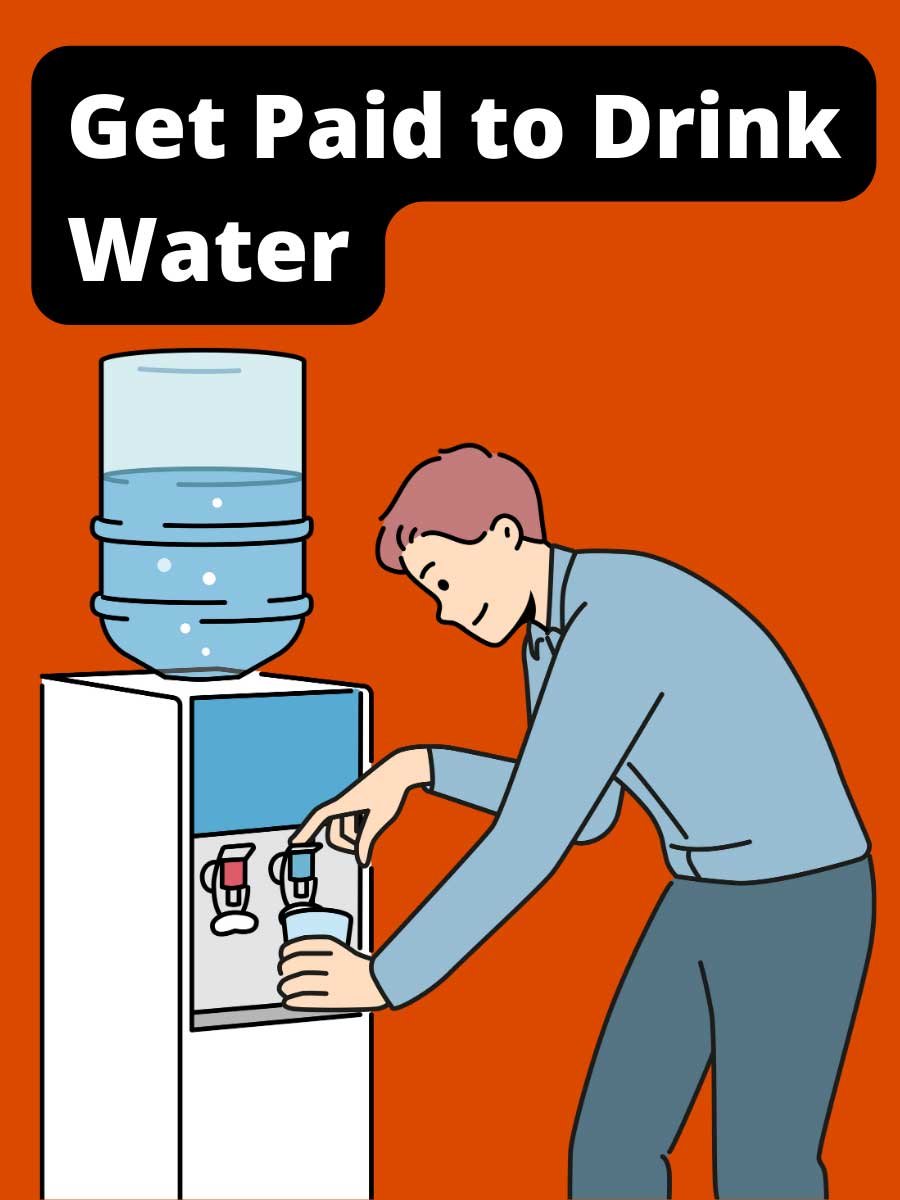How To Improve Typing Job Wellness In 6 Ways

Knowledge of typing job wellness is vital because sitting for extended periods during typing results in two main issues.
One is the development of passive lifestyle health issues, such as obesity, cardiovascular problems, and diabetes.
Two is too much strain on your wrists, fingers, and hands leads to a condition known as Repetitive Strain Injury (RSI), which results in pain, numbness, and tingling sensations.
Visit the links below to discover;
- Top 13 High-Paying Typing Jobs
- Learn More About Typing Jobs
- Best 10 Recommended Ways To Make Money Online.
This post might contain affiliate links. I may earn some commission if you click on such links. You shall not incur any extra cost if that happens. Please read our full affiliate disclosure here!
Quick Cash Approaches: Delve into these ideas for rapid methods to generate up to $500 with no initial investment required.
Join Swagbucks now and enjoy a sign-up bonus of $5. Achieve a $500 earnings milestone with Swagbucks by actively participating in surveys, watching videos, and completing easy tasks. |
ZippyLoan provides a convenient solution for obtaining a desired loan quickly and efficiently even with a bad credit record. After following the straightforward online process you get approved, and access the funds within 5 business days.
How To Improve Typing Job Wellness In 6 Ways
#1 – Preventing Injuries
Ergonomics
Investing in ergonomic typing accessories reduces strain on your hands and wrists, making typing more comfortable.
Nutrition
Maintain a balanced diet rich in fruits, vegetables, and whole grains. Avoid excessive caffeine and sugar, leading to energy crashes and mood swings. For example, read this post on nails for typing jobs to learn how to keep your nails healthy and beautiful, even during prolonged typing sessions.
Lighting
Consider blue light-blocking glasses to reduce eye strain caused by prolonged screen time. Ensure your workspace is well-lit, or use task lighting to illuminate your keyboard and documents.
Technique
Learn to type correctly using all ten fingers. This reduces the need to strain your fingers as you distribute the workload evenly. Taking touch typing lessons and exercises can help improve your typing technique.
Typography
Typography is important because some fonts are easier to read than others. Opt for clean, legible fonts to reduce eye strain and mental fatigue. Adjust the text size and color to suit your preferences. Avoid glaring colors or tiny text, as they can be mentally taxing.
Organization
Keep your workspace clutter-free by using organizers and storage solutions. For example, invest in cable organizers because tangled cables look messy and can pose tripping hazards. A clean workspace promotes a clear mind and better focus.
Hydration
Staying hydrated with at least 8 glasses of water daily can help prevent inflammation and promote overall health.
Rest
Aim for 7-9 hours of uninterrupted sleep each night to recharge your mind and body.
Eye Care
Follow the 20-20-20 rule; every 20 minutes, take a 20-second break and look at something 20 feet away, to reduce eye strain and promote eye care.
Check-ups
Regular health check-ups are essential for promptly identifying and addressing any emerging health issues. If you experience persistent discomfort or pain, consult a healthcare professional or an ergonomic specialist for personalized advice.
Rapid Money Strategies: Explore these concepts for swift ways to earn up to $500 without any upfront investment.
Survey Junkie stands out as a premier survey platform offering lucrative surveys, boasting an impressive 4⭐ Trustpilot rating; join now and kickstart your earnings journey. Check out the other best 3 survey apps here. |
Inbox Dollars is a fantastic get-paid opportunity to earn through surveys, video viewing, and other activities on Inbox Dollars. Enroll with Inbox Dollars today and receive a $5 sign-up bonus. Check out other get-paid sites here.
#2 – Optimizing Your Workspace
Chair
Selecting the right chair built to support the natural curve of your spine will provide ample lumbar support. The chair must also be adjustable in height and recline to relieve your spine.
Desk
Selecting the proper desk height will allow your arms to rest comfortably on the keyboard with your elbows bent at approximately 90 degrees.
Keyboard & Mouse
Positioning the keyboard and mouse in such a way that your wrists remain in a neutral position while typing.
Monitor
Your monitor screen or monitor stand should be at eye level and at a distance where you can comfortably read the screen without straining your neck.
Footrest
Your feet should always touch the ground or footrest comfortably to ensure proper posture.
LOOKING FOR AN ONLINE SIDE JOB?
|
#3 – Staying Fit
Regular Breaks
Typing continuously for hours is not healthy. Take regular breaks to stretch and move around. A simple five-minute break every hour can significantly reduce the strain on your muscles and joints.
Desk Exercises
Some exercises can be done right at your desk, such as;
- Perform wrist exercises like wrist rotations, flexions, and extensions to improve wrist strength and flexibility.
- Simple neck rotations and shoulder shrugs to prevent tension and discomfort.
- Try holding your legs up for a few seconds to engage your leg muscles and promote circulation.
- Engage your core muscles by contracting and holding them for a few seconds, then releasing them. This simple exercise helps improve posture and reduces the risk of back pain.
Cardiovascular Activities
Incorporate cardio exercises into your daily routine, such as;
- Brisk walking, jogging, or cycling during breaks can boost your fitness.
- Engaging in short walks, quick workouts, and flexibility exercises like Yoga helps prevent conditions like repetitive strain injury (RSI).
WANT TO MAKE EXTRA MONEY?
|
#4 – Managing Stress
Work-Life Balance
Establish clear boundaries between work and personal life. Please communicate with your family about your work schedule and enlist their support.
Social Connection
Many typists work remotely, leading to feelings of isolation and disconnection from colleagues and supervisors. Connect with friends and family regularly to combat loneliness. Online communities of typists and freelancers provide a platform for networking and support.
Seeking Support
Don’t hesitate to seek support from colleagues, friends, or professionals if you feel overwhelmed.
GET PAID TO..
|
#5 – Mastering Time Management
Prioritization
Typing jobs often involves working with tight deadlines, which can create a high-pressure environment. Meeting these deadlines can be stressful, especially when unexpected challenges arise. Prioritize tasks based on deadlines and importance to ensure you start your day by completing the most critical tasks.
Task Batching & Delegation
Group similar tasks together and tackle them in batches to reduce the occurrence of ‘writer’s block,’ which requires zero effort to switch between different types of work. Delegation frees up your time for more critical responsibilities.
Goal Setting
Develop a daily or weekly schedule outlining your tasks and deadlines, and ensure you stick to your plan as closely as possible. Be realistic about what you can accomplish in a given time frame.
Time Blocking
Divide your day into blocks of time dedicated to specific tasks. This method can enhance your focus and prevent multitasking, which can decrease productivity.
Minimize Distractions
Identify common distractions in your work environment and take steps to minimize them. Turn off notifications, close unnecessary tabs, and create a quiet workspace.
Use Productivity Tools
Consider using project management software, to-do lists, and time-tracking apps.
Have Boundaries
Learn to say no because it’s essential to know your limits and be willing to decline additional tasks when your workload is already substantial.
Evaluate & Improve Continuously
Periodically review your time management strategies and adjust them as needed. What works best for you may change over time. Treat time management as an ongoing process of improvement. Look for ways to refine your techniques and become more efficient over time.
DO NOT FORGET TO….
|
#6 – Practicing Mindfulness
Breath Awareness
Paying attention to your breath can anchor you in the present moment and calm your racing thoughts.
Paying Attention
Closely listen to your body and pay attention to any tension or discomfort. Paying close attention to the sensation of typing, the sounds of the keys, and the rhythm of your keystrokes can help you stay focused and reduce stress.
Guided Meditation
Many apps and online resources offer guided mindfulness meditations designed for office workers and typists. These sessions can guide you through mindfulness practices tailored to your needs.
LEARN MORE ABOUT:
|
Typing Jobs Wellness Frequently Asked Questions (FAQS)
What is Typing Job Wellness, and why is it important?
It refers to the holistic well-being of individuals engaged in typing-intensive professions. It encompasses physical health, mental well-being, and ergonomic considerations for typing jobs. This wellness concept is crucial because it addresses typists’ potential physical strain, stress, and productivity challenges.
How can I improve my Typing Job Wellness?
Improving involves a multifaceted approach. Create an ergonomic workspace that supports good posture and minimizes physical strain. Incorporate regular breaks and stretching exercises to prevent injuries and maintain physical health. Explore mindfulness and stress management techniques to address mental well-being. Additionally, seek out online resources, courses, and communities dedicated to Typing Job Wellness to continually enhance your well-being and skills.
Are there online resources for learning about Typing Job Wellness?
You can find articles, blogs, videos, and webinars covering ergonomic practices, stress management, mindfulness techniques, and exercises tailored to typists. Additionally, online courses and workshops are designed to enhance Typing Job Wellness. Websites, forums, and social media communities can also provide valuable insights and support from others in the field.
How can I assess my current Typing Job Wellness level?
Assessing begins with self-reflection. Consider factors like your physical comfort while typing, stress or discomfort, and overall job satisfaction. You can also track your typing speed, accuracy, and the presence of any physical symptoms like wrist pain or eye strain. Seeking feedback from colleagues or supervisors can offer additional insights. Regularly evaluating these aspects will help you gauge your Typing Job Wellness.
Are there any mobile apps designed for tracking Typing Job Wellness progress?
Some apps offer ergonomic tips, exercises, and reminders for posture and breaks. Others can track your typing speed and accuracy over time. Mindfulness and stress management apps can also help you monitor and improve your mental well-being. These apps can be valuable companions in your journey to better Typing Job Wellness.
Can Typing Job Wellness improve my overall job satisfaction?
Yes, because you are more likely to enjoy your work when you reduce physical discomfort, prevent injuries, and manage stress effectively. Feeling physically and mentally well at your job contributes to higher job satisfaction, improved productivity, and a better work-life balance, making Typing Job Wellness a critical factor in job satisfaction.
What are the potential risks of ignoring Typing Job Wellness?
Ignoring can lead to several risks. These may include physical ailments like carpal tunnel syndrome, eye strain, and back pain. Mental health challenges such as stress and burnout can also arise. In the long term, neglecting Typing Job Wellness may lead to decreased productivity, job dissatisfaction, and a higher likelihood of developing chronic health issues. Prioritizing Typing Job Wellness is essential to mitigate these risks.
Are there legal requirements or regulations related to Typing Job Wellness?
Legal requirements and regulations vary by country and industry. Some regions have workplace ergonomics regulations that employers must adhere to, including providing ergonomic equipment and ensuring employee safety. Familiarizing yourself with local labor laws and regulations specific to your profession is essential. Employers are often responsible for creating a safe and healthy work environment, which may encompass Typing Job Wellness considerations.
How To Improve Typing Job Wellness In 6 Ways







